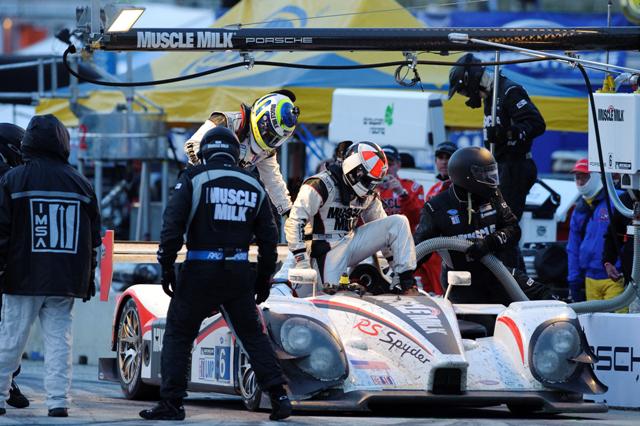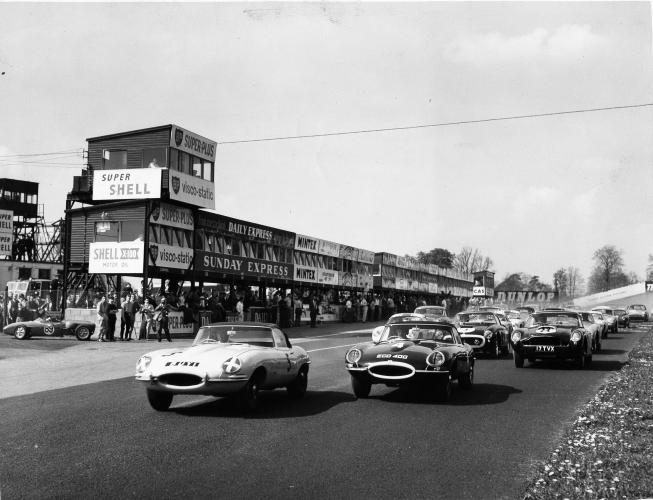American Le Mans Series 101

Pit crews waste precious time.
Every second in the pits is time lost on the race track . . . teamwork counts.
Pit stops in the ModSpace American Le Mans Monterey, presented by Patrón play a significant role in the race’s outcome. There are very specific rules and a unique style to pit stops, practices that trace back in the history of Le Mans-style racing. Two pit stops are typically made during sprint races (2:45). In longer races, such as the one at Mazda Raceway Laguna Seca, race cars will usually pit about every 50-60 minutes.
American Le Mans Series Full Pit Stop (fuel and tires) Sequence
- Race car enters pit box, stops and turns off engine.
- During refueling stops, fuel must be added first. NOTE: Fuel capacity varies among fuel types and classes.
- The fueler plugs into one side of the race car while the fuel vent crew person is on the other side of the car. In GT cars, fueling and venting are both completed by one person. A driver change may begin during the fueling process but no other service or work can be done to the race car until fueling is completed.
- Drivers help each other in and out of the cockpit – a process that includes fastening safety belts and plugging in helmet communications, telemetry, the driver ID transponder and, if applicable, a driver helmet cam.
- Once fueling – which can take a mere 20-25 seconds – is completed, the air jack is plugged into the race car, and the tires (weighing approximately 20-25 pounds each) are changed.
- Two tire changers, one for both sides of the car and each sporting an air gun, remove the front tire lug nut (center lock wheel) and then proceed to the rear of the race car to remove the back lug nut. The tire changer replaces the rear tire and tightens the back lug nut.
- Simultaneously, the helper puts a new tire on the front of the race car before taking the old front tire back over the pit wall. The tire changer then moves back to the front and tightens the front lug nut before carrying the old back tire over the pit wall. All four tires are changed in six to ten seconds.
American Le Mans Series Pit Stop Rules
- Maximum pit lane speed during a Series race is 60 kph (37.3 mph).
- All pit crew members must wear full fire suits and safety clothing.
- A pit crew supervisor is permitted over the pit wall just prior to a scheduled pit stop to signal and stop the race car in the pit box as well as talk to the driver or pit crew members (mechanics) during a pit stop, but is not allowed to perform any other function.
- Aside from the pit crew supervisor, all other team members and equipment must remain behind the pit wall until the race car has come to a stop in its designated pit.
- After an LMP or GT race car has come to a complete stop, up to four (4) pit crew members are allowed over the pit wall to service the race car. The only way a driver (entering or leaving the race car) can service or perform any work on the car during a pit stop is if he/she is considered one of the servicing pit crew members.
- A single crew member who mans the fire extinguisher also is allowed over the wall.
- Not considered part of the over-the-wall crew, the pit crew “dead man” operates the lever on the fuel tank that allows fuel to flow through the hose and into the race car. The “dead man” can stop the flow of fuel should there be any type of problem.
- Outside of the team, specific industry representatives who are examining car equipment such as tires and/or other components are allowed over the wall during a pit stop.
- Only the driver is allowed to restart the car before it leaves the pit box.


